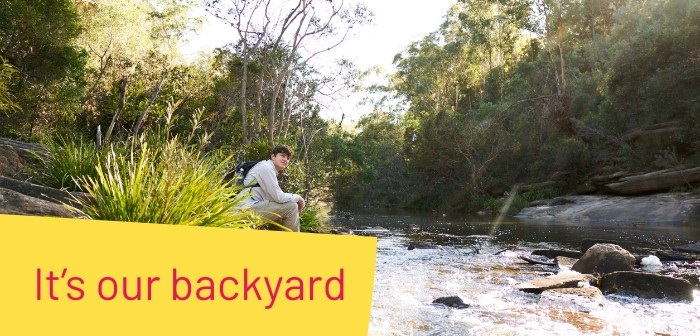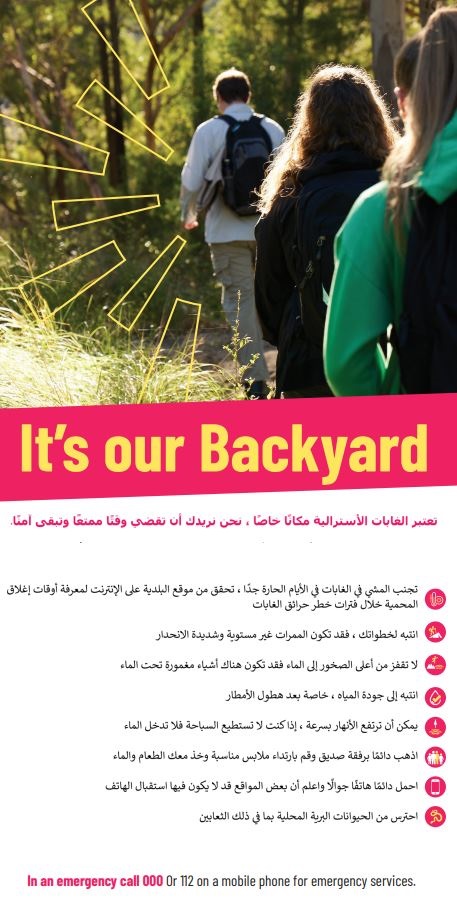Staying Safe In The Bush

Georges River, Ingleburn Reserve
The Australian Bush is a special place, we want you to have fun and stay safe whilst exploring.
- Avoid bushwalking on very hot days, check Council alerts for reserve closures during bushfire danger periods.
- Mind your feet, trails can be uneven and steep
- Don't jump off rocks into the water as there may be submerged objects
- Be mindful of water quality, particularly after rainfall
- Rivers can rise quickly, if you can't swim don't enter the water
- Always go with a friend, wear suitable clothing and take food and water
- Always carry a mobile phone and note some locations might not have reception
- Keep a lookout for local wildlife including snakes.
Bush Safety Translation Services
You can download our Bush Safety Tips(PDF, 6MB) to share within your communities on how to stay safe in the bush.
Languages cover Arabic, Bengali, Hindi, Filipino/Tagalog, Samoan, Spanish, Mandarin, Urdu, Nepali and Vietnamese.
If you would like a printed copy for your service or community group please get in touch with our Environmental Education Officer open.space@campbelltown.nsw.gov.au

Click here to enlarge(JPG, 79KB)
River Safety
Rivers are the leading location for drowning in Australia. You can't see ice cold water, snags like tree branches or strong currents but they can be dangerous.
When enjoying inland waterways it's important to be aware of the risks and stay safe. Whether you're swimming, kayaking or even just relaxing on the bank, there are many hidden dangers that you may not be aware of.
Advice to swim safe in rivers and inland waterways:
- Always enter the water slowly, feet first, never dive in
- Never swim in fast flowing water, check the speed first by throwing in a twig to see how fast it travels
- Never swim alone
- Swim safe, swim sober, do not swim under the influence of alcohol/drugs
- Riverbeds may be uneven, unstable or slippery, so take care
- Be sure of your own swimming ability
- Beware of any submerged objects such as trees, branches, rocks and discarded rubbish
- Look for eddies and swirling water, this may indicate rocks or snags just below the surface
- Always wear a PFD when in a water craft
- Remember the river can change hourly, what was safe in the morning may not be safe in the afternoon.
For more information on River Safety Respect the River by Royal Life Saving Society Australia